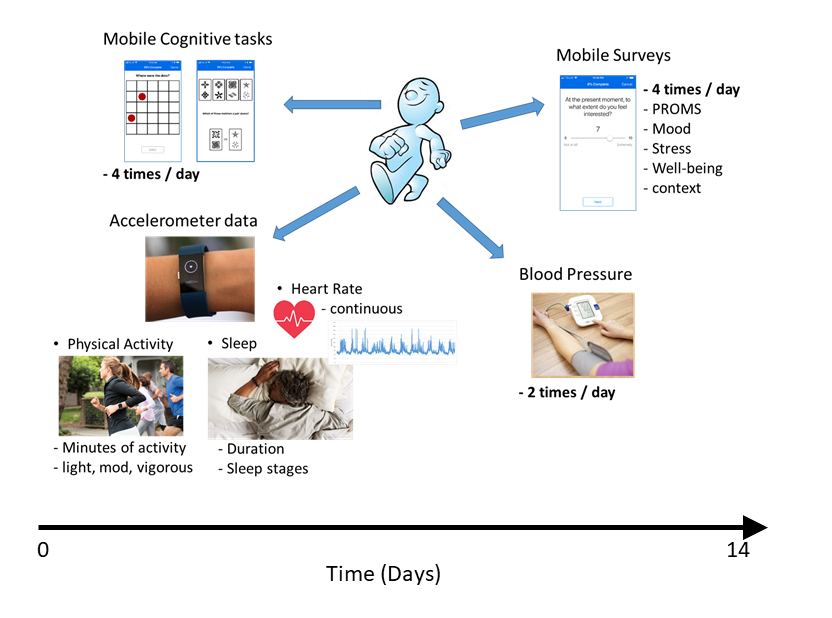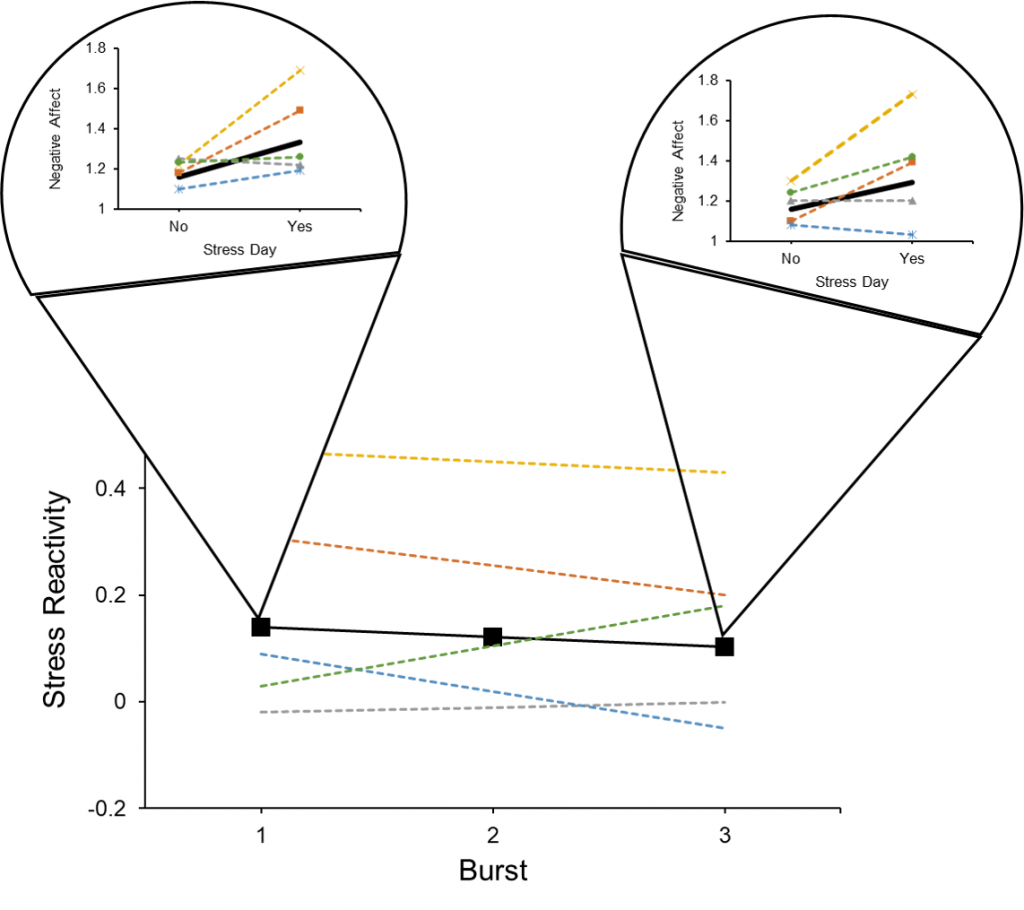
Research in the Slow Lab is aimed at understanding how individuals elevate their ongoing experiences of health and well-being. The experience of well-being is multi-dimensional and changes over differing time-frames, from short-term ups and downs that fluctuate across hours or days, to mid-term changes across months or seasons, to long-term shifts that take place over years or decades across adulthood. There are many factors that make up our day-to-day lives that influence (and are influenced by) well-being in the short-, mid-, and long-term. Some of the factors that we examine include common everyday stressors, concerns over climate change, physical activity, mindfulness, and social engagement.
The Slow Lab is focused on utilizing innovative research designs, measurement tools, and analytical approaches to better capture the ongoing experiences of well-being and the influencing factors as they unfold across the adult lifespan. To accomplish this we frequently employ intensive longitudinal research designs in combination with analytic approaches (e.g., Multilevel SEM) that take into account the multiple timescales that we consider in our understanding of health and well-being.
Intensive Longitudinal Designs
Our research utilizes intensive longitudinal designs to account for individual fluctuations in health behaviours and experiences of well-being. Intensive longitudinal designs go by a few names (ecological momentary assessment [EMA], daily diary, etc). These designs consist of frequent, closely spaced repeated assessments (across hours, days, or weeks) that capture events, behaviours, or experiences that unfold over shorter time-frames. They can take the form of self-report surveys, health and activity data captured through wearable devices (e.g., accelerometers), or brief mobile cognitive assessments.

Multiple Timescales
By utilizing intensive longitudinal designs, our research considers how behaviours and experiences unfold over multiple timescales, from very short daily fluctuations in health and well-being to longer changes across years or decades throughout adulthood. We also consider how the influence of daily predictors, such as the effect of stress on mood, might also change over different stages in life. For example, some individuals become less emotionally reactive to daily stressors as they age, whereas those who continue to be affected by daily stressors tend to be at greater risk of poorer health later in life.


